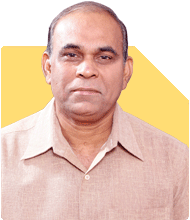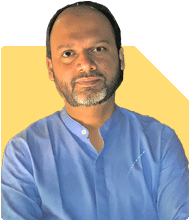How to invest retirement benefits of 52 lakhs for mentally challenged son?
Ramalingam Kalirajan |10881 Answers |Ask -Follow
Mutual Funds, Financial Planning Expert - Answered on Aug 21, 2024
He has an MBA in finance from the University of Madras and is a certified financial planner.
He is the director and chief financial planner at Holistic Investment, a Chennai-based firm that offers financial planning and wealth management advice.... more

I will retire from my job in next three months. I will get a pension of rs 56000, and pf and other benefits for rs 52 laks. Have my own house and will get rent of rs 35000. Daughter is married but i have a mentally challenged son. Can you suggest me how to invest my retirement benefits of 52 lakhs.
Assessing Your Monthly Income and Expenses
Total Monthly Income: Your combined income from pension and rent is Rs 91,000. This provides a stable monthly cash flow.
Essential Expenses: It's crucial to assess your monthly living expenses, including medical care for your son. This will help determine how much of your monthly income is needed for daily expenses and how much can be saved or invested.
Emergency Fund Allocation
Creating a Safety Net: Allocate a portion of your Rs 52 lakhs to an emergency fund. This fund should cover at least 12 months of living expenses and any unforeseen medical costs for your son.
Safe Investment Options: Keep this emergency fund in safe and liquid options like fixed deposits or short-term debt funds. This ensures quick access to funds without risking capital.
Long-Term Care for Your Son
Dedicated Corpus: Set aside a significant portion of your Rs 52 lakhs for your son's long-term care. This corpus should be invested in low-risk options to ensure steady growth while preserving capital.
Consider Trusts: Explore setting up a trust for your son. This ensures that his financial needs are met even after your lifetime. A Certified Financial Planner (CFP) can guide you on how to structure this trust effectively.
Investment Strategy for Retirement Corpus
1. Conservative Debt Funds
Capital Preservation: Invest a portion of your retirement corpus in conservative debt funds. These funds provide steady returns with minimal risk, making them ideal for retirees.
Regular Income: Debt funds can also generate a regular income stream, supplementing your pension and rent.
2. Monthly Income Plans (MIPs)
Additional Monthly Income: Monthly Income Plans (MIPs) invest primarily in debt with a small equity component. They offer the potential for higher returns while still prioritizing safety.
Supplement Your Pension: MIPs can provide an additional income stream to cover any shortfalls in your monthly expenses.
3. Senior Citizens' Savings Scheme (SCSS)
Safe Investment: The Senior Citizens' Savings Scheme (SCSS) is a government-backed scheme offering regular interest payments. It is one of the safest options for retirees.
Regular Payouts: SCSS provides quarterly interest payouts, ensuring a steady cash flow. You can invest up to Rs 15 lakhs in this scheme.
4. Post Office Monthly Income Scheme (POMIS)
Fixed Monthly Income: The Post Office Monthly Income Scheme (POMIS) offers a fixed monthly interest payout, providing a reliable income stream.
Low Risk: POMIS is a low-risk investment, making it a good option for preserving capital while earning steady returns.
5. Balanced Mutual Funds
Controlled Risk: Balanced mutual funds invest in a mix of equity and debt. They offer moderate growth potential with controlled risk, suitable for retirees looking for some equity exposure.
Potential for Growth: While these funds are riskier than debt funds, they offer better returns. A small allocation can help grow your corpus over time.
Insurance and Health Care Planning
Health Insurance: Ensure that you and your son have adequate health insurance coverage. Medical costs can be a significant burden, especially in retirement. Consider top-up or super top-up plans to enhance your existing coverage.
Term Insurance: If you don’t already have term insurance, consider getting a policy. It can provide financial security to your family in your absence.
Planning for Inflation
Inflation Protection: It's important to invest a portion of your corpus in options that can outpace inflation. This ensures that your purchasing power is maintained over time.
Balanced Portfolio: A mix of debt and balanced funds can help manage inflation risk while providing stability.
Avoiding High-Risk Investments
Stay Away from High-Risk Options: Given your need for financial stability, avoid high-risk investments like equities, commodities, or volatile funds. These can lead to significant losses, which could be detrimental in retirement.
Focus on Capital Preservation: Prioritise investments that protect your capital and provide steady, reliable income.
Estate Planning and Will Preparation
Creating a Will: Ensure you have a will in place to clearly outline how your assets should be distributed. This will prevent legal complications and ensure your son's needs are met.
Nominees and Beneficiaries: Review and update the nominees on all your financial accounts and investments. This will ensure a smooth transfer of assets to your son or other family members.
Finally
Your retirement plan should focus on stability, regular income, and long-term security for your son. Prioritize low-risk investments, ensure you have an adequate emergency fund, and consider setting up a trust for your son. With careful planning, your Rs 52 lakhs can be invested wisely to secure your family's future.
Best Regards,
K. Ramalingam, MBA, CFP,
Chief Financial Planner,
www.holisticinvestment.in
You may like to see similar questions and answers below
Sanjeev Govila | Answer |Ask -Follow
Financial Planner - Answered on Feb 10, 2024
Ramalingam Kalirajan |10881 Answers |Ask -Follow
Mutual Funds, Financial Planning Expert - Answered on Jul 19, 2024
Ramalingam Kalirajan |10881 Answers |Ask -Follow
Mutual Funds, Financial Planning Expert - Answered on Jan 29, 2025
Milind Vadjikar | Answer |Ask -Follow
Insurance, Stocks, MF, PF Expert - Answered on Feb 03, 2025
Ramalingam Kalirajan |10881 Answers |Ask -Follow
Mutual Funds, Financial Planning Expert - Answered on Aug 28, 2025
Nayagam P P |10854 Answers |Ask -Follow
Career Counsellor - Answered on Dec 14, 2025
Radheshyam Zanwar |6744 Answers |Ask -Follow
MHT-CET, IIT-JEE, NEET-UG Expert - Answered on Dec 14, 2025
Radheshyam Zanwar |6744 Answers |Ask -Follow
MHT-CET, IIT-JEE, NEET-UG Expert - Answered on Dec 14, 2025
Dr Dipankar Dutta |1840 Answers |Ask -Follow
Tech Careers and Skill Development Expert - Answered on Dec 14, 2025
Dr Dipankar Dutta |1840 Answers |Ask -Follow
Tech Careers and Skill Development Expert - Answered on Dec 13, 2025
Dr Dipankar Dutta |1840 Answers |Ask -Follow
Tech Careers and Skill Development Expert - Answered on Dec 13, 2025
Mayank Chandel |2575 Answers |Ask -Follow
IIT-JEE, NEET-UG, SAT, CLAT, CA, CS Exam Expert - Answered on Dec 13, 2025
Radheshyam Zanwar |6744 Answers |Ask -Follow
MHT-CET, IIT-JEE, NEET-UG Expert - Answered on Dec 13, 2025
Mayank Chandel |2575 Answers |Ask -Follow
IIT-JEE, NEET-UG, SAT, CLAT, CA, CS Exam Expert - Answered on Dec 13, 2025
Mayank Chandel |2575 Answers |Ask -Follow
IIT-JEE, NEET-UG, SAT, CLAT, CA, CS Exam Expert - Answered on Dec 13, 2025













.jpg)











